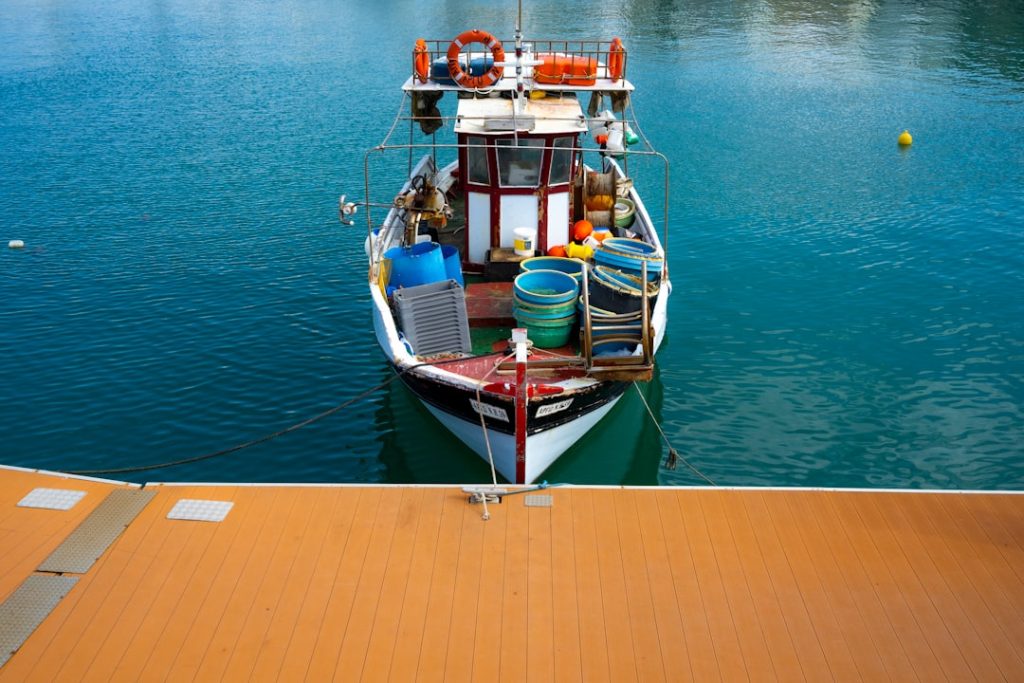Before embarking on the journey of purchasing a boat, it is crucial to first understand your specific needs and establish a realistic budget. The type of boating activities you plan to engage in will significantly influence your choice. For instance, if you envision leisurely weekend outings with family, a comfortable cabin cruiser might be ideal.
Conversely, if you are an avid angler, a fishing boat equipped with the necessary amenities for your sport would be more suitable. Additionally, consider the number of passengers you expect to accommodate regularly. A larger vessel may be necessary for entertaining friends and family, while a smaller boat could suffice for solo adventures or intimate gatherings.
Budgeting is equally important in this process. Beyond the initial purchase price, prospective boat owners must account for ongoing costs such as maintenance, docking fees, insurance, and fuel. A common mistake is underestimating these additional expenses, which can quickly add up and strain finances.
It is advisable to create a comprehensive budget that includes both fixed and variable costs associated with boat ownership. This financial planning will help ensure that you can enjoy your new vessel without the stress of unexpected financial burdens.
Key Takeaways
- Assess your boating needs and set a realistic budget before starting your search.
- Research various boat types to find one that matches your lifestyle and intended use.
- Thoroughly evaluate the condition of used boats to avoid costly repairs later.
- Collaborate with trusted brokers or dealers to ensure a smooth buying process.
- Perform sea trials and inspections, negotiate terms carefully, and finalize financing and insurance before completing the purchase.
Researching Different Types of Boats
The boating market is diverse, offering a wide array of vessels tailored to various activities and preferences. Understanding the different types of boats available is essential for making an informed decision. For example, sailboats are popular among those who appreciate the art of sailing and seek a more tranquil experience on the water.
They come in various sizes and designs, from small dinghies to large yachts, each offering unique sailing experiences. On the other hand, powerboats are favored for their speed and ease of use, making them ideal for water sports or quick trips across the water. In addition to sailboats and powerboats, there are specialized vessels such as pontoon boats, which are perfect for leisurely cruising on lakes and rivers due to their stability and spaciousness.
Jet skis and personal watercraft cater to thrill-seekers looking for high-speed adventures. Furthermore, fishing boats come in various configurations, from small skiffs to larger center consoles equipped with fishing gear and storage. Each type of boat serves a distinct purpose, so it is essential to align your choice with your intended use to ensure satisfaction with your purchase.
Evaluating the Condition of Used Boats

When considering a used boat, a thorough evaluation of its condition is paramount. Unlike new boats that come with warranties and guarantees, used vessels may have hidden issues that could lead to costly repairs down the line. Start by examining the hull for any signs of damage, such as cracks or blisters, which could indicate structural problems.
Pay close attention to the condition of the gel coat; a well-maintained exterior not only enhances aesthetics but also protects against environmental wear. Additionally, inspect the engine and mechanical systems carefully. Request maintenance records to understand how well the boat has been cared for over its lifespan.
A well-documented service history can provide insights into potential issues that may arise in the future. Furthermore, check the electrical systems, plumbing, and any onboard equipment such as navigation systems or fishing gear. If possible, enlist the help of a marine surveyor who can conduct a professional inspection and provide an unbiased assessment of the boat’s condition.
Working with a Reputable Broker or Dealer
| Metric | Description | Typical Range | Importance |
|---|---|---|---|
| Licensing & Registration | Verification that the broker/dealer is registered with regulatory bodies | 100% compliance expected | High |
| Client Complaints | Number of complaints filed against the broker/dealer per year | 0-5 complaints | High |
| Years in Operation | Number of years the broker/dealer has been in business | 5-50 years | Medium |
| Customer Satisfaction Score | Average rating from client feedback surveys (scale 1-10) | 7-10 | High |
| Transaction Transparency | Degree to which fees and processes are clearly disclosed | High transparency expected | High |
| Financial Stability | Credit rating or financial health indicators of the broker/dealer | Investment grade or equivalent | High |
| Regulatory Actions | Number of enforcement actions or sanctions in the past 5 years | 0-1 actions | High |
| Range of Services | Variety of financial products and advisory services offered | Basic to comprehensive | Medium |
Navigating the boat-buying process can be complex, which is why working with a reputable broker or dealer can be invaluable. A knowledgeable broker can provide insights into market trends, helping you find a vessel that meets your needs while staying within your budget. They often have access to listings that may not be publicly available and can guide you through the intricacies of boat ownership.
When selecting a broker or dealer, it is essential to conduct thorough research. Look for reviews and testimonials from previous clients to gauge their reputation in the industry. A trustworthy broker will prioritize your interests over their commission and will be transparent about any potential issues with a vessel you are considering.
Establishing a good rapport with your broker can also facilitate smoother negotiations and ensure that you receive sound advice throughout the purchasing process.
Negotiating the Purchase Price and Terms
Once you have identified a suitable boat, the next step involves negotiating the purchase price and terms. This stage can be daunting for many buyers, but it is crucial to approach it with confidence and preparation. Start by researching comparable boats in the market to establish a fair price range.
Understanding the value of similar vessels will empower you during negotiations and help you avoid overpaying. When negotiating, consider not only the price but also other terms such as warranties, included equipment, and financing options. For instance, if the seller is unwilling to lower the price significantly, you might negotiate for additional items like safety gear or upgraded electronics to be included in the deal.
Be prepared to walk away if the terms do not meet your expectations; sometimes, this can prompt sellers to reconsider their position. Effective negotiation requires patience and persistence but can ultimately lead to a more favorable outcome.
Conducting a Sea Trial and Inspection

Before finalizing your purchase, conducting a sea trial is an essential step that allows you to experience the boat firsthand. A sea trial provides an opportunity to assess how well the vessel performs on the water under real conditions. During this trial, pay attention to how the boat handles various speeds, its stability in different water conditions, and any unusual noises from the engine or mechanical systems.
In addition to performance evaluation, this trial also allows you to test onboard features such as navigation systems, electronics, and comfort levels within the cabin or cockpit areas. It is advisable to bring along an experienced boater or marine surveyor who can provide insights into any potential issues that may arise during operation. If any concerns are identified during the sea trial, they can serve as leverage in negotiations or may even prompt you to reconsider your purchase altogether.
Securing Financing and Insurance
Once you have successfully negotiated the purchase price and terms of your chosen boat, securing financing becomes a critical next step for many buyers. Various financing options are available depending on your financial situation and creditworthiness. Traditional banks often offer loans specifically tailored for boat purchases; however, credit unions may provide more favorable rates for their members.
Additionally, some dealers offer in-house financing options that can simplify the process. Insurance is another vital aspect of boat ownership that should not be overlooked. Marine insurance policies vary widely in coverage options and costs; therefore, it is essential to shop around for quotes from different providers.
Factors such as the type of boat, its value, intended use, and your boating experience will influence insurance premiums. Ensure that you understand what is covered under your policy—such as liability coverage for accidents or damage—and consider additional coverage options like theft protection or coverage for personal belongings onboard.
Completing the Purchase and Taking Delivery
After securing financing and insurance, you are ready to complete the purchase and take delivery of your new boat. This final step typically involves signing various documents that formalize the sale, including a bill of sale and title transfer paperwork. Ensure that all details are accurate before signing anything; discrepancies could lead to complications down the line.
Once all paperwork is finalized, it’s time to take delivery of your vessel. This moment marks not just the culmination of your research and decision-making process but also the beginning of new adventures on the water. Before leaving with your boat, take some time to familiarize yourself with its features and systems once more—this includes understanding how to operate safety equipment and navigation tools effectively.
With everything in place, you can set sail into new horizons with confidence and excitement about your boating journey ahead.


